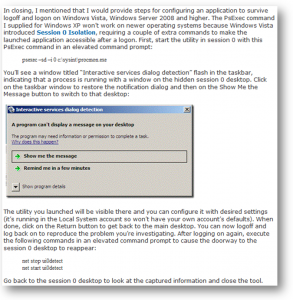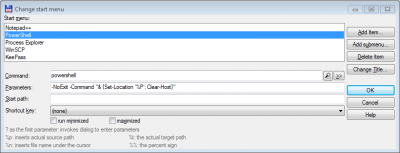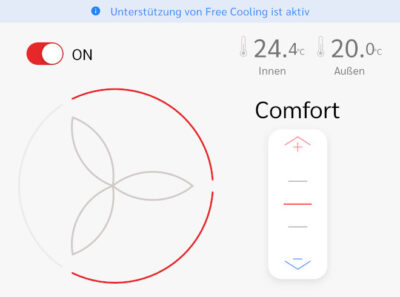New Articles, Tools, Tips and Tricks: Windows, Hyper-V, Citrix, PowerShell and Application Streaming / App-V
Windows
Beginning with Vista, when formatting a drive the entire disk is overwritten with zeroes. While this is good for end users who like to wipe all data prior to selling or throwing away a disk drive, SAN-based volumes should not be formatted like this. Perform a quick format instead. But if you want to make sure the data is really gone – no need for “secure erase” programs any more! The need for multiple overwrites is a myth.
TechNet Magazine published a list of 77 tips for Windows 7 (are these number games really necessary?). There should be something for everyone in it.
You were hoping that Microsoft would add a way of troubleshooting user profile issues to Windows 7 / Server 2008 R2? The same functionality they simply removed with the rearchitectured profile load mechanism in Vista? Nope. If you have profile problems, you are left in the dark. For proof, search for the word “profile” in this article.
Here is a description of the MSI behavior on Windows Server 2003 and 2008 Terminal Servers with a short explanation of Windows Installer RDS Compatibility.
Thinking about upgrading a machine to either Windows 7 or Server 2008 R2? Although one may debate whether upgrading should be recommended, if you want to do it, you should know about the (many) restrictions that apply. In a nutshell: Cross-language: no. Cross-architecture (32 bit -> 64 bit): no. XP -> Win7: no.
But that article is not about restrictions only. It mentions an interesting performance improvement to the registry that should make registry flushing (writing changed data to the hive files on disk) much faster – on earlier OSs flushing could severely impact system performance.
Wondering what those “conhost.exe” processes are that are showing up in Task Manager (of Windows 7 and Server 2008 R2)? Conhost.exe is the new console host that isolates command-line applications from the system for security reasons.
Microsoft published a guide on the high-speed networking features in Server 2008 (R2), for example TCP Chimney.
Did you try to copy or synchronize larger amounts of files to a Vista or Server 2008 machine recently? If so, you may have spent hours fruitlessly troubleshooting very slow performance issues like me. Install this patch instead.
Do you know about the Microsoft Debug Diagnostic Tool, recently upgraded to version 1.1? It could “assist in troubleshooting issues such as hangs, slow performance, memory leaks or fragmentation, and crashes in any user-mode process”. Give it a try!
In Windows 7 Microsoft removed the quick launch bar, and with it an easy way to put icons in a place where users can actually find them. As a replacement, you could use this script to pin items to the start menu or the taskbar.
Hyper-V
Here is a list of the top support issues related to Hyper-V on Windows Server 2008 and suggestions what to do about them.
Do you want to upgrade your Hyper-V hosts from Server 2008 to R2. Here is how to do it (but it should be much simpler!).
Free tools for managing Hyper-V on Codeplex including a PowerShell library. Nice!
Citrix
Citrix released a tool called HDX Experience Monitor for XenDesktop that allows administrator to monitor the operation of HDX from within a virtual desktop.
XenApp 5 Feature Pack 2 brings Secure Clipboard Control, essentially an optional one-way-only clipboard. Nice little improvement.
PowerShell
PowerShell 2.0 for XP / Vista / Server 2003 and 2008 is available! The download also includes BITS 4.0 and WinRM 2.0. And while you are at it: Microsoft ported back several components from Windows 7 to Vista and Server 2008. This download is called Platform Update and contains graphics components, the Windows Automation API and the Ribbon and Animation Manager Library.
Along with the Windows 7 Resource Kit Microsoft released a PowerShell Pack that contains hundreds of script(let)s in ten categories.
File server migrations have always been a job for robocopy. But that might change. Here is a new, PowerShell, way. On TechNet, even!
Which Windows Server 2008 R2 roles and features include PowerShell cmdlets and how do you use them? Look it up in this list.
Application Streaming / App-V
Wilco van Bragt published guidelines for virtualizing applications with App-V or Citrix Application Streaming.
Microsoft published a guide for using App-V on terminal servers aka remote desktop session hosts.
Note: This is mainly a condensed and beautified version of my twitter postings. You can get them unfiltered and without delay by following me.






